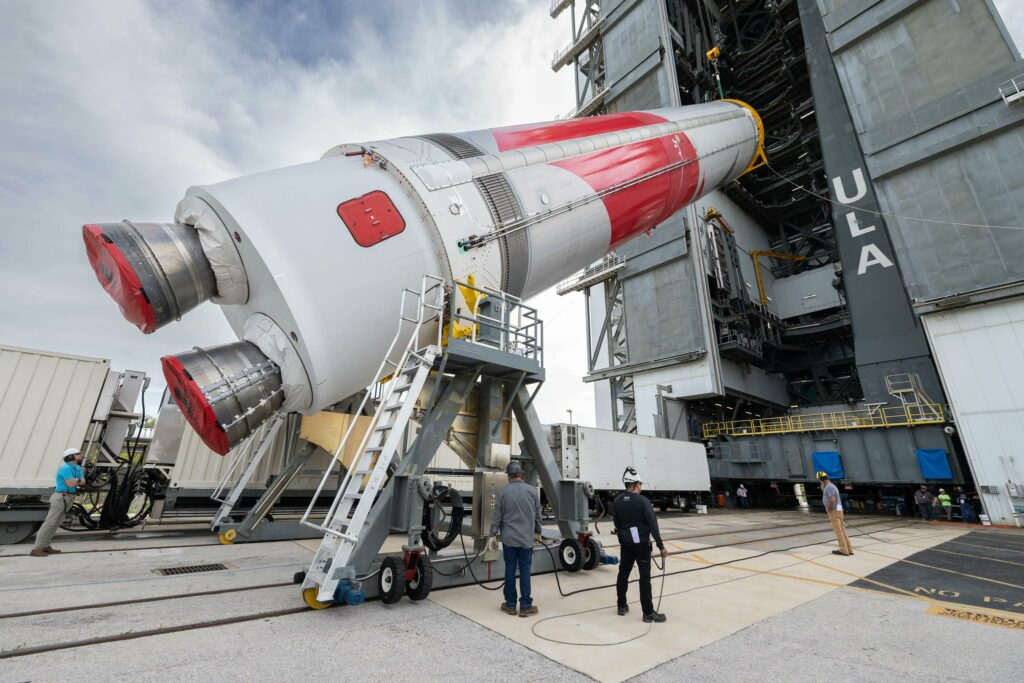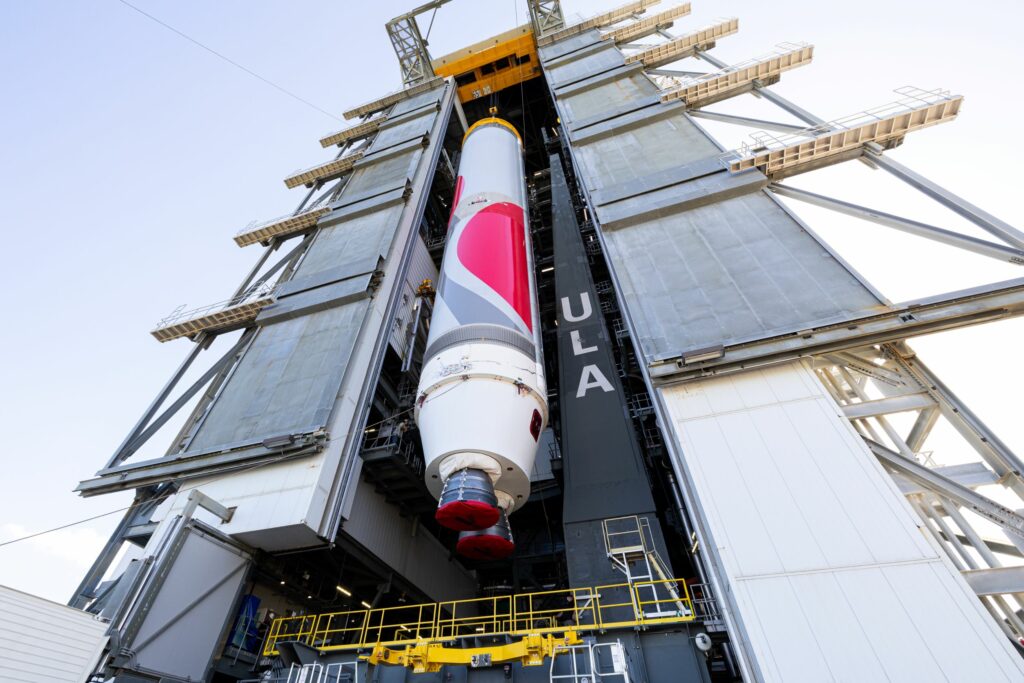Specialists of the launch operator ULA (United Launch Alliance) have successfully completed the assembly of the new Vulcan rocket. In the near future, it will undergo a series of tests, after which engineers will begin to prepare it for its debut launch.
Replacement for Atlas V
The Vulcan rocket will replace Atlas V — the main “workhorse” of ULA of the past two decades. Its development began in 2014, shortly after Russia’s annexation of Crimea, when the American government decided to get rid of the dependence associated with Russian RD-180 engines (they are used in the first stage of Atlas V) for national security purposes.

The new carrier has a two-stage design with the possibility of adding side solid-fuel boosters. In its most powerful configuration, the rocket will be able to launch up to 27 tons into low Earth orbit.
Vulcan’s first stage is equipped with two BE-4 methane engines built by Blue Origin. It is worth noting that due to the unavailability of these power units, the Vulcan commissioning date has been repeatedly shifted. But at the end of 2022, Blue Origin finally delivered the first batch of BE-4 certified for flight, which allowed preparations to begin for the first launch of the rocket.
Vulcan’s First Launch
In the coming weeks, ULA specialists will conduct comprehensive inspections of the assembled rocket. After that, it will be delivered to the LC-41 launch pad, where it will undergo a series of tests, including refueling with fuel components, rehearsal of the pre-launch countdown and burning of the first stage engines. If the tests do not reveal any problems, Vulcan will return to the Vehicle Assembly Building, where solid-fuel boosters and a payload will be installed on it.

As part of its debut mission, Vulcan will launch a pair of prototypes of Amazon’s Project Kuiper system satellites into orbit, and will also send the Peregrine spacecraft built by Astrobotic to the Moon. It should land in the area of the Gruithuisen Domes.
According to https://blog.ulalaunch.com
Follow us on Twitter to get the most interesting space news in time
https://twitter.com/ust_magazine
